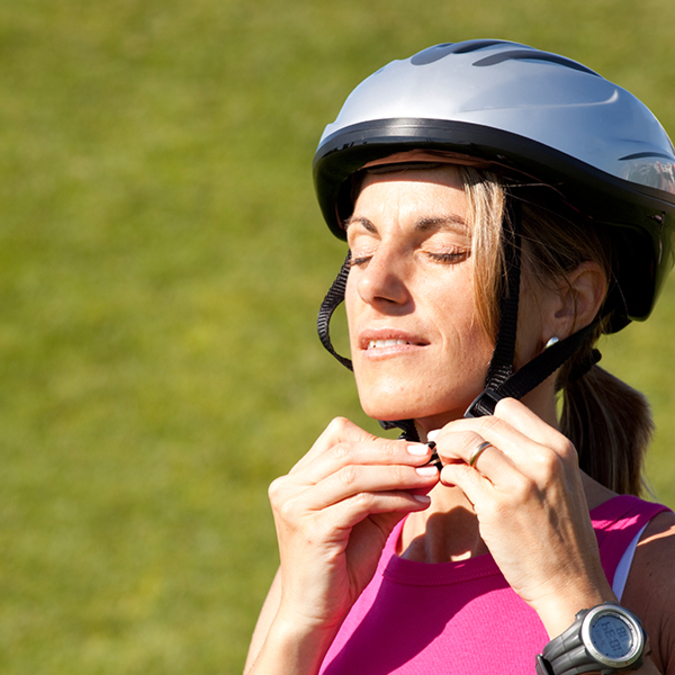There’s a reason why “Share the Road” campaigns have spread across the country. In 2015, deaths among bicyclists rose by 10 percent, with motor-vehicle-related crashes taking 818 lives and injuring an estimated 45,000 bicyclists, reported the National Highway Traffic Safety Administration. Here are five tips for cyclists to stay safe.
Know the rules of the road
Part of responsible cycling requires that you do your homework. Knowing the traffic rules and regulations for cycling keeps you and others safe. The rules of the road for cyclists are the same for motorists. Here is a quick list provided by FindLaw.com to remind you how to cycle within the rules:
- Signaling. Cyclists are required to use proper hand signals when executing a turn, stopping or changing lanes. Right turns or lane changes require the extension of the right hand, straight out; left turns or lane changes require the right hand bent up, 90 degrees at the elbow; and stopping requires the right hand be bent downward, 90 degrees at the elbow.
- Helmet laws. Check with your city requirements, but most states require that a bicycle helmet be worn.
- Lights and reflectors. Cyclists are required by law to have red lights on the back of the bikes and white lights on the front. They are also required to have white reflectors on the front of their bikes and red reflectors on the back.
- Sidewalk riding. Most local and state ordinances don’t allow cyclists over a certain age to ride on sidewalks. If you are riding on the sidewalk, cyclists are required to yield to pedestrians.
- Stoplights and stop signs. Like motorists, it is against the law for cyclists to ride through a stop sign or stoplight. Failing to stop before proceeding through a stop sign could earn you a citation.
Don’t make them guess
When it comes to bicycle safety, be predictable in your actions and intentions. Don’t make sudden turns and movements, and always use your hand signs. When possible, make eye contact with motorists to ensure they see you and know what your next move is.

Stand out
There isn’t as much between you and the pavement when your cycling as opposed to driving in a car so wear bright clothing. Strive to be seen — another reason you need to make sure your lights and reflectors are where they need to be.
Anticipate what others are going to do
Cyclists can prevent accidents and personal injury by learning to ride defensively. Be alert to what drivers and pedestrians are doing around you so you can react quickly when needed. Avoid biking too closely to parked cars that could clip you when drivers open their doors. Keep a lookout for turning vehicles that could cut you off.
Watch out for road hazards
Motorists and pedestrians aren’t the only things that cyclists need to be wary of on the road. Garbage, potholes and other weather-related road hazards can quickly vault you off your bike. When approaching railroad tracks, cross at right angles to avoid getting a wheel stuck or destabilizing your bike.
Conduct a bike check before mounting your bicycle
Safety on the road starts with safe equipment. Remembering the elements of a basic bike check comes down to knowing your ABCs. BikeLeague.org puts it this way:
- A is for air
- B is for brakes
- C is for cranks and chain
Helmet fit and bike fit are also essential elements to road safety for cyclists. Make sure both are where they need to be before turning the pedals.
Don’t forget to carry the tools you will need for bike repair and maintenance on the road. Flat tires don’t just happen to four-wheeled vehicles.
While not all road accidents can be avoided, doing your part can go a long way in keeping you and others safe.
However, when accidents strike, victims need an attorney they can trust. With more than 40 years of experience in personal injury law, the attorneys at Ed Bernstein & Associates have what it takes to offer you financial recovery while you physically recover. Visit edbernstein.com or call 702-240-0000 to find out how to get started.


